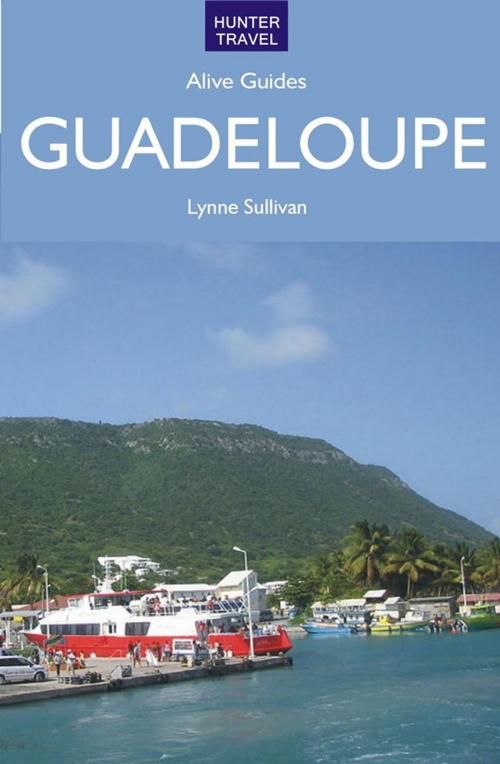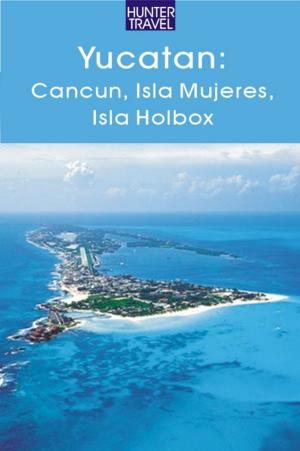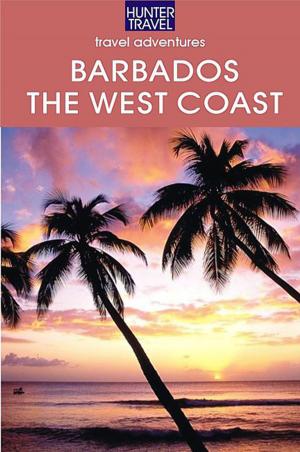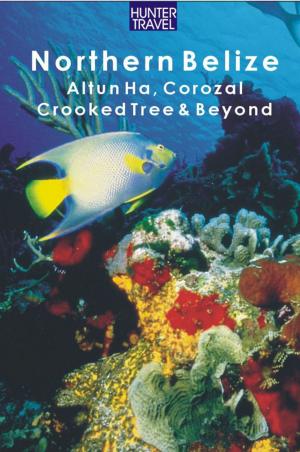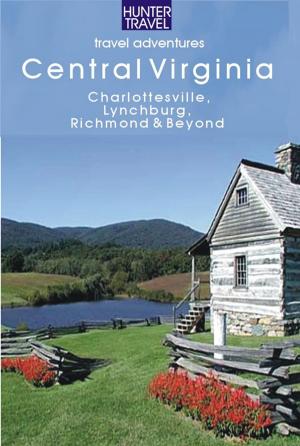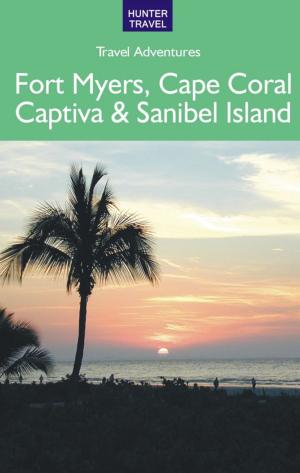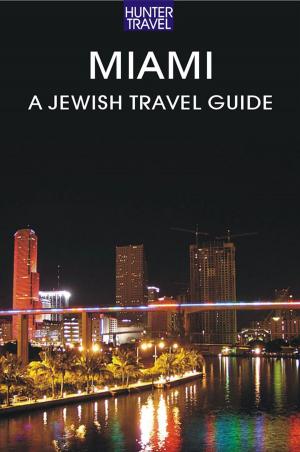Guadeloupe Alive Guide
Nonfiction, Travel, Caribbean & Latin America, Caribbean & West Indies, Reference| Author: | Lynne Sullivan | ISBN: | 9781588437099 |
| Publisher: | Hunter Publishing, Inc. | Publication: | September 13, 2013 |
| Imprint: | Hunter Publishing | Language: | English |
| Author: | Lynne Sullivan |
| ISBN: | 9781588437099 |
| Publisher: | Hunter Publishing, Inc. |
| Publication: | September 13, 2013 |
| Imprint: | Hunter Publishing |
| Language: | English |
Guadeloupe is an archipelago in the center of the Lesser Antilles. The main island is actually two irregular ovals hinged together like an open oyster shell. Smaller outer islands float nearby like spilled pearls in the turquoise sea. Grande-Terre, the eastern half of the shell, is basically a flat field of lush sugarcane dotted with colorful towns and rimmed by long, sandy beaches. Basse-Terre is a mountainous forest marked by waterfalls, rivers, hot springs and a volcano. The two are joined by a bridge over the Rivière-Salée, a channel that connects the Caribbean Sea and Atlantic Ocean. Grande-Terre and Basse-Terre: Why, you may wonder, is the smaller, flatter half of the island called Grande-Terre (big land), and the larger, mountainous half called Basse-Terre (low land)? The only theory that makes sense is that early sailors, with their obligatory obsession for wind, noticed that northeastern trade winds blew grande when they hit the flat eastern shore, but basse when they pushed over the mountains in the west. The less developed islands of Marie-Galante, Les Saintes and La Désirade stretch out along the double island's southern shore. Les Saintes is actually a collection of mini-islands that are rocky and steep like Basse-Terre. Marie-Galante is flatter and similar to Grande-Terre topographically. La Désirade is a long, narrow, rugged rock with one road, only a few residents and limited facilities – a nature-lover's dream. Most visitors choose to stay on the main island and take day-trips or overnight excurions to the outer islands. Grande-Terre and Basse-Terre are connected by a highway that bridges the channel between them, so driving from one to the other is simple. Boats leave for the outer islands from four towns on the main island's southern coast, and they are the quickest and least expensive way to island-hop. Air Guadeloupe flies daily from the international airport near Pointe-à-Pitre to Les Saintes, Marie-Galante and La Désirade. Because the island is so diverse, in a single day you can enjoy a drive along both the jagged coast of the wild Atlantic and the pristine coves of the calm Caribbean – or hike uphill into the rain forest then nap on a sunny beach. Several towns on both Basse-Terre and Grande-Terre offer gourmet dining, lively entertainment and world-class lodging. Because the archipelago is a legitimate région of France, you will enjoy French-style comfort and cuisine with a tropical twist wherever you stay. This tropical twist is one of Guadeloupe's many charms. Shops and offices close between noon and 2 o'clock for a leisurely gourmet lunch with wine, as they typically do all over Europe. But, out on the streets, the music has a decidedly African beat. The women wear madras headdresses as they do in India, and the aroma of West Indies spices permeates the air. Another appealing quality is the stable economy that makes Guadeloupe neither rich nor poor. Towns aren't filled with tourist-badgering hustlers or begging street people. At the same time, the islanders are friendly, and a simple "bonjour" breaks the language barrier. There aren't a lot of fancy boutiques or glitzy nightspots, but everyone seems to have plenty of everything they need. This is a complete and highly detailed guide to Guadeloupe - the restaurants, the hotels, what to see and what to do. It is excerpted from our 650-page Martinique, Guadeloupe, Dominica & St. Lucia Alive guide.
Guadeloupe is an archipelago in the center of the Lesser Antilles. The main island is actually two irregular ovals hinged together like an open oyster shell. Smaller outer islands float nearby like spilled pearls in the turquoise sea. Grande-Terre, the eastern half of the shell, is basically a flat field of lush sugarcane dotted with colorful towns and rimmed by long, sandy beaches. Basse-Terre is a mountainous forest marked by waterfalls, rivers, hot springs and a volcano. The two are joined by a bridge over the Rivière-Salée, a channel that connects the Caribbean Sea and Atlantic Ocean. Grande-Terre and Basse-Terre: Why, you may wonder, is the smaller, flatter half of the island called Grande-Terre (big land), and the larger, mountainous half called Basse-Terre (low land)? The only theory that makes sense is that early sailors, with their obligatory obsession for wind, noticed that northeastern trade winds blew grande when they hit the flat eastern shore, but basse when they pushed over the mountains in the west. The less developed islands of Marie-Galante, Les Saintes and La Désirade stretch out along the double island's southern shore. Les Saintes is actually a collection of mini-islands that are rocky and steep like Basse-Terre. Marie-Galante is flatter and similar to Grande-Terre topographically. La Désirade is a long, narrow, rugged rock with one road, only a few residents and limited facilities – a nature-lover's dream. Most visitors choose to stay on the main island and take day-trips or overnight excurions to the outer islands. Grande-Terre and Basse-Terre are connected by a highway that bridges the channel between them, so driving from one to the other is simple. Boats leave for the outer islands from four towns on the main island's southern coast, and they are the quickest and least expensive way to island-hop. Air Guadeloupe flies daily from the international airport near Pointe-à-Pitre to Les Saintes, Marie-Galante and La Désirade. Because the island is so diverse, in a single day you can enjoy a drive along both the jagged coast of the wild Atlantic and the pristine coves of the calm Caribbean – or hike uphill into the rain forest then nap on a sunny beach. Several towns on both Basse-Terre and Grande-Terre offer gourmet dining, lively entertainment and world-class lodging. Because the archipelago is a legitimate région of France, you will enjoy French-style comfort and cuisine with a tropical twist wherever you stay. This tropical twist is one of Guadeloupe's many charms. Shops and offices close between noon and 2 o'clock for a leisurely gourmet lunch with wine, as they typically do all over Europe. But, out on the streets, the music has a decidedly African beat. The women wear madras headdresses as they do in India, and the aroma of West Indies spices permeates the air. Another appealing quality is the stable economy that makes Guadeloupe neither rich nor poor. Towns aren't filled with tourist-badgering hustlers or begging street people. At the same time, the islanders are friendly, and a simple "bonjour" breaks the language barrier. There aren't a lot of fancy boutiques or glitzy nightspots, but everyone seems to have plenty of everything they need. This is a complete and highly detailed guide to Guadeloupe - the restaurants, the hotels, what to see and what to do. It is excerpted from our 650-page Martinique, Guadeloupe, Dominica & St. Lucia Alive guide.
